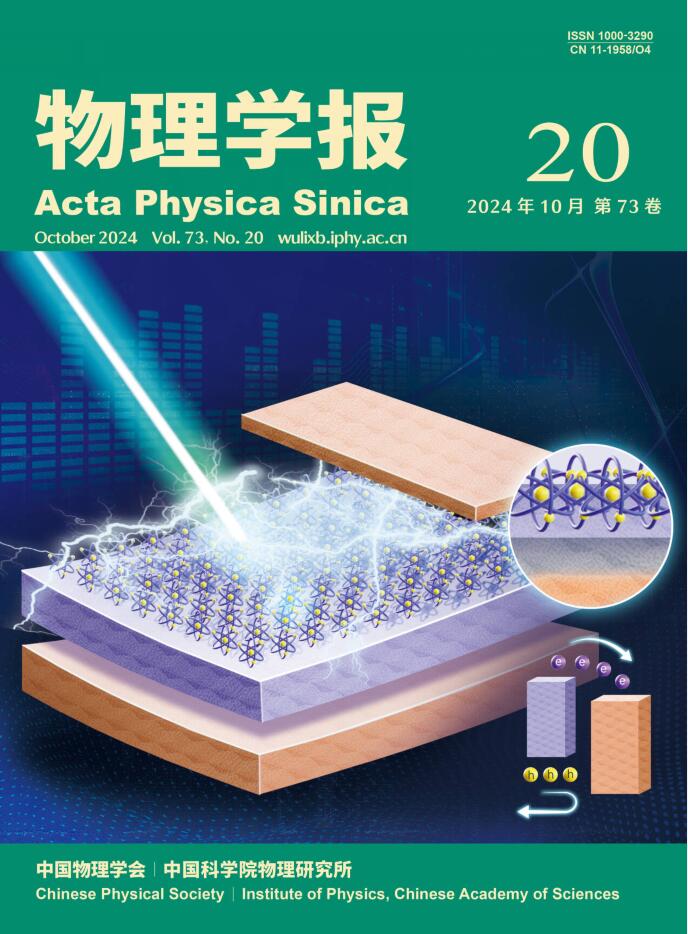利用重力场模型的二度系数和新的进动率来约束火星内核的大小和密度
IF 0.8
4区 物理与天体物理
Q3 PHYSICS, MULTIDISCIPLINARY
引用次数: 1
摘要
目前,仅凭火星“洞察号”地震数据还很难探测到火星固体内核的存在。为了解决这个问题,我们的研究打算用平均密度和平均惯性矩因子来约束火星固体内核的大小和密度。利用火星高重力场模型JGMRO120f和GMM3-120,考虑最近的进动率,得到了平均密度和平均惯性矩因子,作为观测值。参考火星4层内部结构模型,考虑地壳密度、地幔密度、外核密度、内核大小和密度4个参数,计算火星平均密度和平均惯性矩因子的模型值。从平均密度观测值和平均惯性矩因子的最小残差与模型值的最小残差来看,两种重力场模型的自由参数分布结果相同。对于自由参数的优化值,两种重力场模型甚至得到了相同的结果。此外,优化的地壳密度、地幔密度和外核密度接近其他研究结果,表明我们的结果具有依赖性。最后,我们的结果表明,火星可能有一个固体内核,大小接近840公里,内核密度接近6950 kg·m-3。我们的结果表明,火星的内核并不完全由纯铁组成,这与最近的研究一致,即火星内核中需要大量补充轻元素。然而,由于反演结果的非唯一性,需要进一步约束火星内核的大小和组成。随着洞察号数据处理技术的提高,洞察号可以进一步了解火星内核的大小和组成。本文章由计算机程序翻译,如有差异,请以英文原文为准。
Using the second-degree coefficients of gravity field models and the new precession rate to constrain the size and density of Martian inner core
Recently, it is yet difficult to detect the existence of Martian solid inner core merely based on Mars seismic InSight data. To deal with this problem, our study intends to use the mean density and mean moment of inertia factor to constrain the size and density of Martian solid inner core. Using Mars high-degree gravity field models JGMRO120f and GMM3-120, and considering the recent precession rate, we obtained the mean density and mean moment of inertia factor, which are treated as observed values. Referring to the 4-layers internal structure model of Mars, and considering the 4 parameters including crustal density, mantle density, density of outer core, size and density of inner core, we calculated the modeled values of the Martian mean density and the mean moment of inertia factor. From the minimum residuals between observed and modeled values of mean density as well as that of mean moment of inertia factor, it is found that the two gravity fields models have the same result of distribution of free parameters. As to the optimized values of the free parameters, the two gravity field models even have the same results. Furthermore, the optimized crustal density, mantel density and density of outer core approach other studies, indicating the dependence of our results. Finally, our result demonstrates that Mars likely has a solid inner core with a size close to 840 km, and the density of inner core is near to 6950 kg·m-3. Our result implies that Mars has an inner core not fully composed of pure iron, which is consistent with the recent study that Mars requires a substantial complement of light elements in Martian core. However, it is further needed to constrain the size and composition of Martian inner core due to the non-uniqueness of inversion results. With the improvement of processing technology on the InSight data, it can be further constrained for the size and composition of Martian inner core.
求助全文
通过发布文献求助,成功后即可免费获取论文全文。
去求助
来源期刊

物理学报
物理-物理:综合
CiteScore
1.70
自引率
30.00%
发文量
31245
审稿时长
1.9 months
期刊介绍:
Acta Physica Sinica (Acta Phys. Sin.) is supervised by Chinese Academy of Sciences and sponsored by Chinese Physical Society and Institute of Physics, Chinese Academy of Sciences. Published by Chinese Physical Society and launched in 1933, it is a semimonthly journal with about 40 articles per issue.
It publishes original and top quality research papers, rapid communications and reviews in all branches of physics in Chinese. Acta Phys. Sin. enjoys high reputation among Chinese physics journals and plays a key role in bridging China and rest of the world in physics research. Specific areas of interest include: Condensed matter and materials physics; Atomic, molecular, and optical physics; Statistical, nonlinear, and soft matter physics; Plasma physics; Interdisciplinary physics.
 求助内容:
求助内容: 应助结果提醒方式:
应助结果提醒方式:


